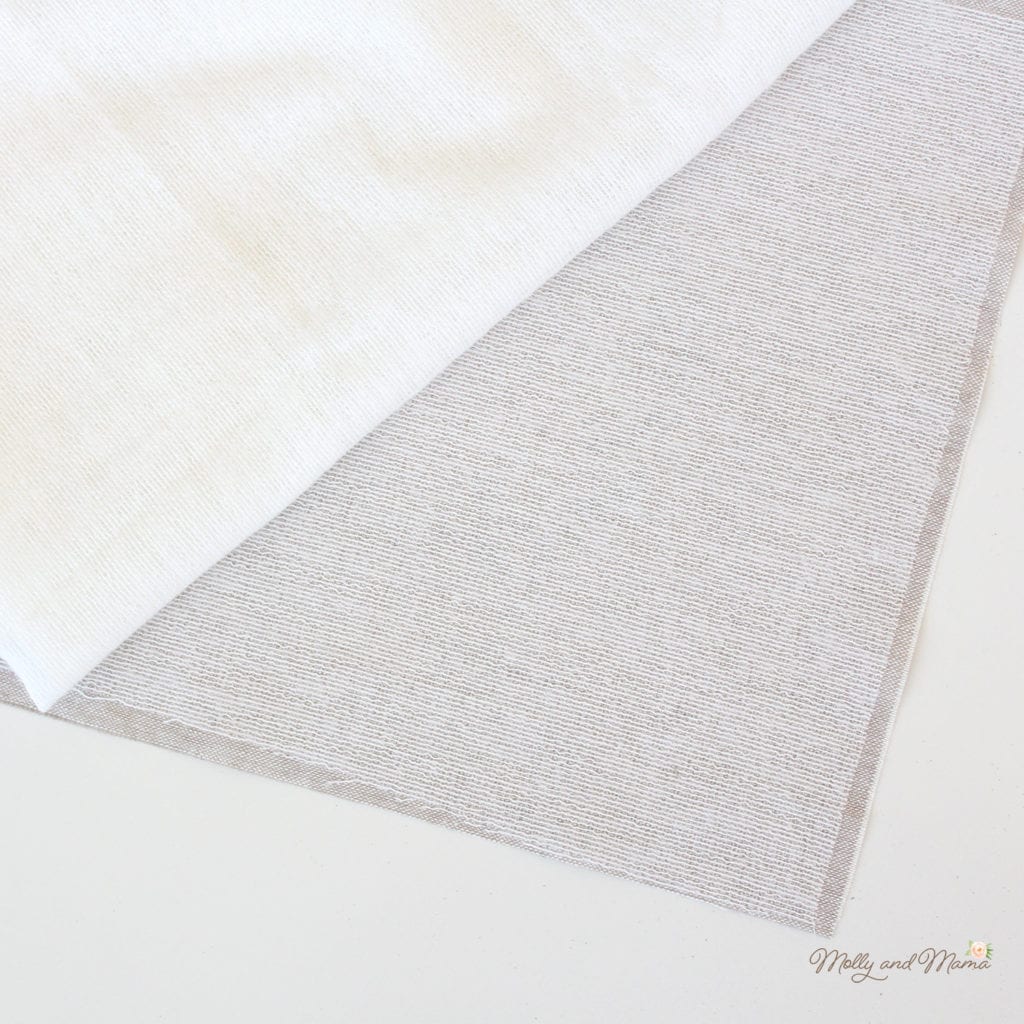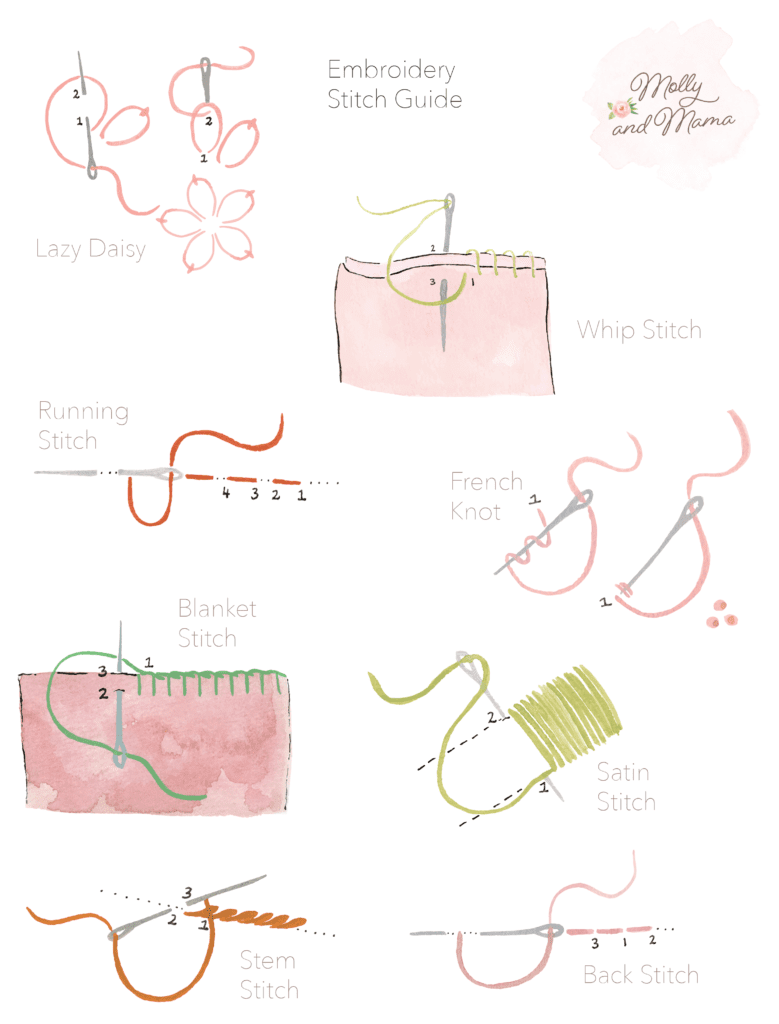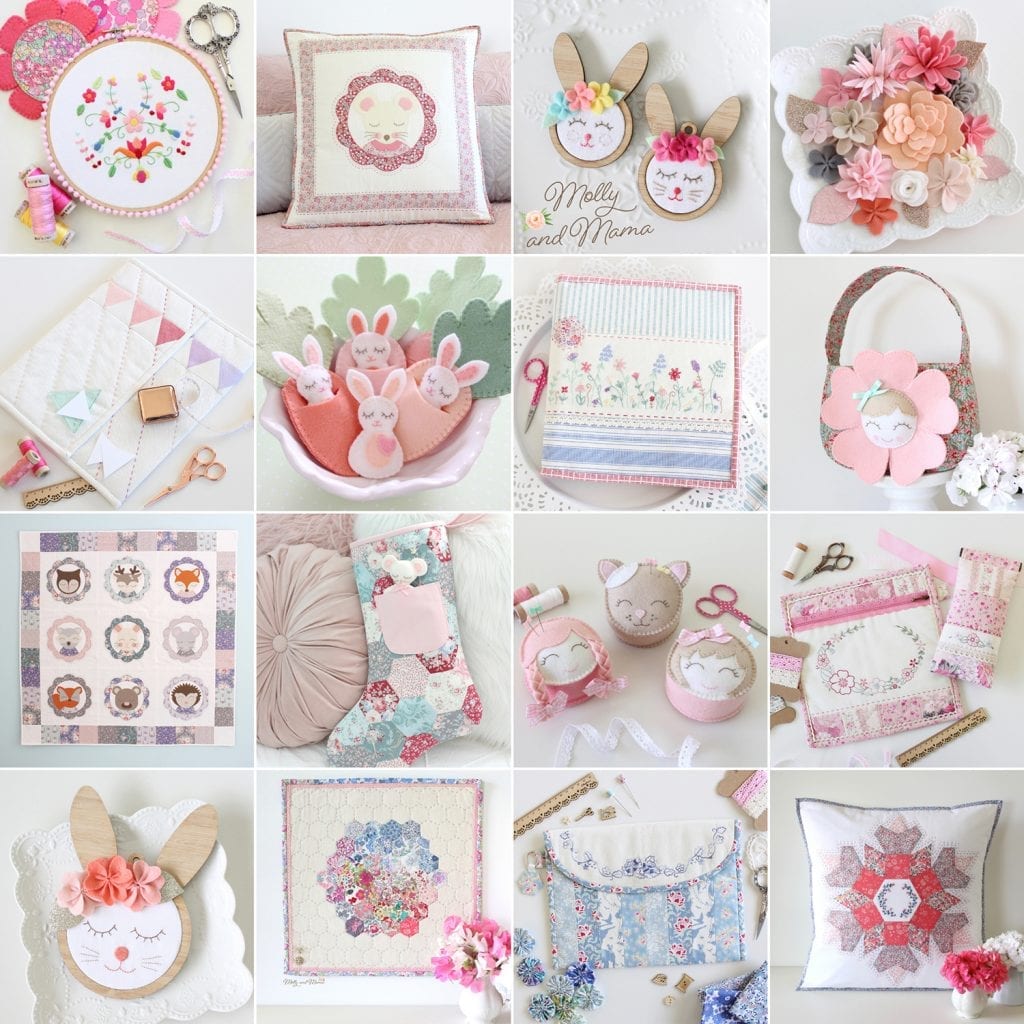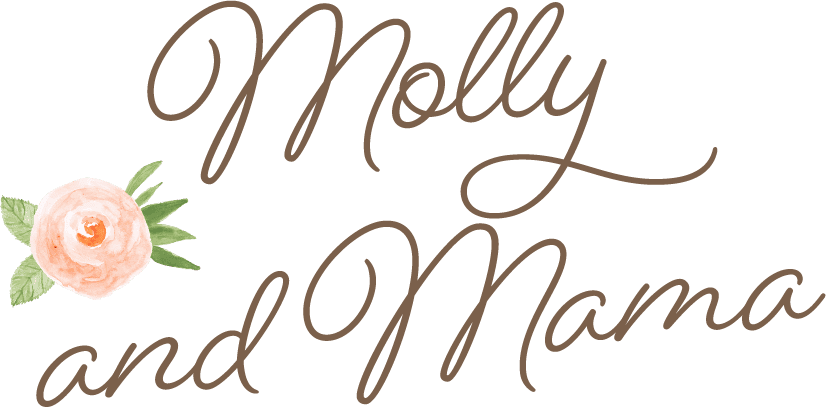How To Get Started On An Embroidery Project

Welcome to part three of my Beginner’s Tutorials for Embroidery. In the last posts we looked at all the supplies you will need to get stitching and how to transfer your design to fabric. But how do you actually start stitching? Let’s go through the basics, step by step.
If you’re looking for a beginner friendly project to stitch, sign up to my newsletter to receive this free embroidery pattern.

You could try it in different colourways.

Or even stitch it in a single colour. It’s a great way to practice the different stitch types without having to change your floss colour. And it looks really effective!

Prepare Your Fabric
First things first! If you have a design in mind to sew, then it’s time to select your fabric. (We discuss fabrics and stabiliser in this POST). Cut the fabric size as suggested for your project pattern. Alternatively, choose a hoop about 2″ (5cm) wider than your embroidery design and then cut your fabric to be another 4″ (10cm) larger than the hoop. This will give you enough excess to keep your fabric firmly in the hoop.
Stabilise the back or wrong side of your fabric using a woven, light weight, fusible interfacing that is designed for embroidery. Cut the interfacing or stabiliser to be just slightly smaller than the fabric.
Below you can see the folded interfacing and then a single layer of it secured to the wrong side of a square of linen.

You may wish to trim the fabric with pinking shears (or zig zag scissors) to prevent the fabric from fraying. Then ensure it is well pressed and crease free, ready for stitching.
Transfer Your Design
Use your favourite method to transfer your embroidery design to the front or right side of your fabric. There are lots of pens available for transferring designs and I explore a few of the options and my favourite transfer methods in more detail in this post.

Position The Fabric In An Embroidery Hoop
Once the design is traced onto your fabric, it’s time to prepare it for stitching. Loosen the screw at the top of your timber embroidery hoop and separate the two rings. Place the inner ring on a flat surface and centre your fabric over the ring. Place the outer ring (with the screw) over the top of the inner ring and manoeuvre the fabric around until it is centred in the hoop and the screw is positioned at the top. Tighten the screw, gently tugging the fabric as you go, so that the hooped fabric is taut.

Thread Your Needle
Select a needle for stitching (learn more about needles HERE). Cut a length of your chosen floss colour. 18″ (45cm) to 20″ (50cm) is a good length to work with. Some people suggest using the length from your elbow to your finger tips as a guide. This is a great tip if you’re just getting started and don’t have a tape measure on hand!
Not sure which floss or thread to use. We explore that in more detail in the Embroidery for Beginners post.
If using 6 stranded embroidery floss, separate the threads to the number outlined in your pattern. If you’re unsure, use two or three strands of floss and set the remainder aside. To separate them, tease the strands apart from the whole floss length, and then gently peel them away.
Trim the floss ends with sharp embroidery scissors for a crisp finish. Ensure the eye of your needle is large enough to accomodate the number of threads you have. Then thread your needle by pushing the trimmed floss ends though the eye (or hole). If the thread doesn’t want to cooperate, wet the tip of the thread ends first and pinch them between your finger tips. Many people like to use a needle threading device too, especially if the thread and needle are fine. Pull about 4″ (10cm) of the thread through the eye and fold it back on itself, ready for stitching.
Start With A Knot
Run your fingers down the thread from the needle to the end. Do this a few times to unravel the strands. Then pick up the ends opposite the needle and tie a single knot in the end.To do this, create a loop by passing the cut end over the attached end. Tuck the cut end inside the loop and pull taut. Trim the end of the thread below the knot to about 3/8″ (1cm) long.
As you develop yours skills, you might like to try other sewing knots or even try methods that involve no knots at all. But the basic knot is a great way to ensure your stitches don’t unravel.
TOP TIP: To save time, thread up a whole bunch of needles before you commence stitching, using a different floss colour for each needle.
Now that your floss is ready for stitching, it’s time to sew!
Embroider your design as outlined in your pattern or instructions. Bring the needle up from the wrong side of the fabric and at the start of one of the shapes to be embroidered. Sew your stitches slowly, evenly and neatly. Remember that if a stitch doesn’t appear the way you would like it to, you can always unthread your needle, undo the stitch and then rethread and restitch it. But don’t get too hung up on individual stitches. It’s the overall effect of the stitches together, that really make the design shine!
To learn more about the most common stitch types, please visit my Beginner’s Stitch Library.

I generally like to sew by colour (for example, sewing all the stitches in pink before moving onto green). It saves me having to rethread my needle all the time, while changing colours.
I try to stitch one section at a time. And I try not to let my needle jump from section to section, otherwise the back of my embroidery design can end up with stitches and lines of floss running all over the place. Not only can these threads get in the way of new stitches, they can also create shadowing that may be seen from the front.

Finishing Your Stitches
So you’re running out of thread or you’ve finished finished sewing an entire section and want to finish off your stitching? The easiest method to secure your stitches is to push your needle and thread through to the back or the wrong side of your design. Then run your needle through some of the stitches on the back (for at least about 3/8″ or 1cm), pull the needle and thread through and trim. Or for smaller areas, sew a few repeated stitches on the wrong side to secure the thread.

Removing Your Traced Design
Now that you’ve finished stitching, remove your embroidery from the hoop. Follow the instructions provided with your transfer pen to remove any embroidery transfer lines if required. It’s important to do this step before ironing the embroidery (so as not to set the ink – unless you are using a heat-erasable marker of course).
Preparing Your Embroidery For Framing
What will you do with your completed embroidery? It’s time to use it to create something beautiful. You might like to add your embroidered panel (or block) to a quilty project, like a pin cushion or needlebook.

You could stitch a whole range of the same template and incorporate each of the embroidered blocks into a quilt design.
Or you may love the design so much, you want to show it off in the timber embroidery hoop and create a gorgeous wall hanging.

Learn all about finishing an embroidery hoop for wall hanging OVER HERE. Using wool felt to back your hoop design creates a lovely neat finish.

I hope you’ve found this tutorial helpful. Don’t forget to visit the other Embroidery Tutorials in the series!
And for more inspiration, pop by the store for beginner friendly, easy to follow, instant download sewing patterns!
Happy stitching, Lauren x

This post was written by Lauren Wright and appeared first on Molly and Mama https://www.MollyandMama.com.au







This is just what I was looking for! Thank you. Your projects are beautiful.
I’m so pleased to hear that Sue. Enjoy!